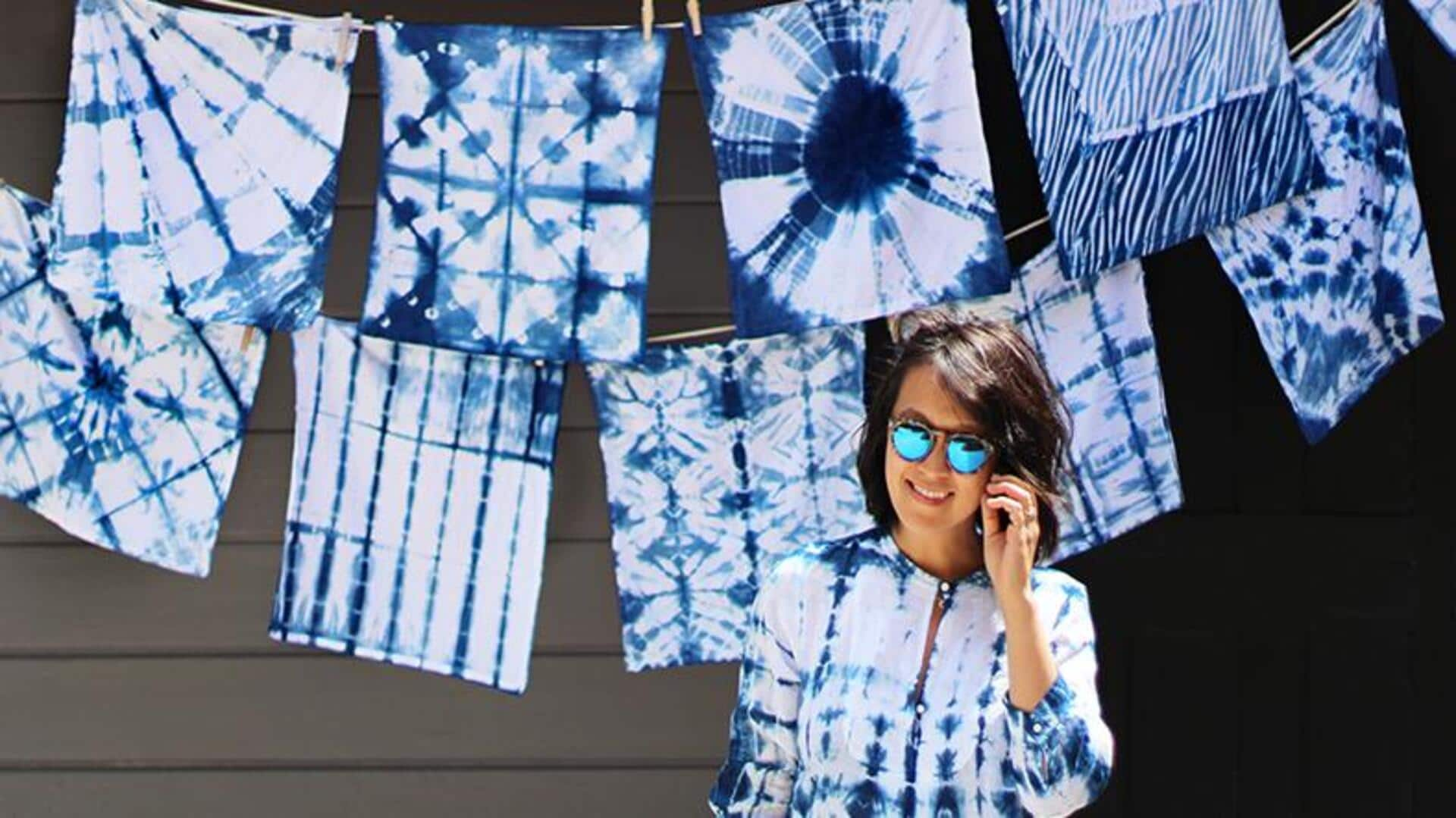
Shibori: A unique Japanese dyeing technique
What's the story
Shibori, a Japanese dyeing technique involving binding, stitching, folding, twisting, and compressing cloth, is a time-honored craft influencing modern fashion. This method offers a distinctive mix of age-old tradition and innovative style. As we delve into the fashion world today, we see how Shibori is creating a significant impact with its unique aesthetic and versatile application.
Background
The roots of shibori
Shibori, an artistic dyeing craft from Japan, dates back to the eighth century. This technique involves shaping fabric through various methods such as binding, stitching, folding, twisting, and compressing. Once the cloth is manipulated, it's secured to maintain the desired pattern during the dyeing process. Indigo, the traditional dye choice for Shibori, imparts a characteristic deep blue color to the fabric's design.
Key concept
Modern twist on tradition
Modern designers are incorporating shibori techniques into fashion, experimenting with a variety of fabrics and a broader palette of dyes. This practice, while rooted in tradition, is being transformed to fit contemporary aesthetics. The integration of shibori into current designs respects its historical significance yet challenges the conventional, leading to innovative fashion that reinterprets an age-old art form for today's style landscape.
Practical advice
DIY shibori fashion
Begin crafting your Shibori-inspired garment with a basic white piece made from natural fibers, such as cotton or silk. Choose a method—folding, twisting, or another—and tightly secure the fabric with string or rubber bands to maintain the pattern. Carefully dip the bound garment into fabric dye, following the provided instructions closely. This will ensure vibrant and striking Shibori patterns emerge on your finished piece.
Eco-friendly tip
Sustainable style choices
Shibori, with its artisanal roots and reliance on natural dyes, naturally complements the sustainable fashion movement. To truly embrace this eco-friendly approach, when engaging in the creation or acquisition of Shibori textiles, prioritize the use of organic materials and nontoxic dyes. This conscious choice helps reduce the environmental footprint, allowing you to appreciate the elegance of Shibori while upholding eco-responsible values.
Fusion fashion
Cross-cultural collaborations
Shibori's adaptability has fostered unique partnerships, blending Japanese dyeing methods with diverse global textile traditions. Designers from various cultures are embracing these techniques, creating garments that showcase a fusion of styles. The resulting fashion pieces are more than just clothing; they are narratives woven from the interplay of different artistic expressions, told through the language of patterns and a spectrum of hues.